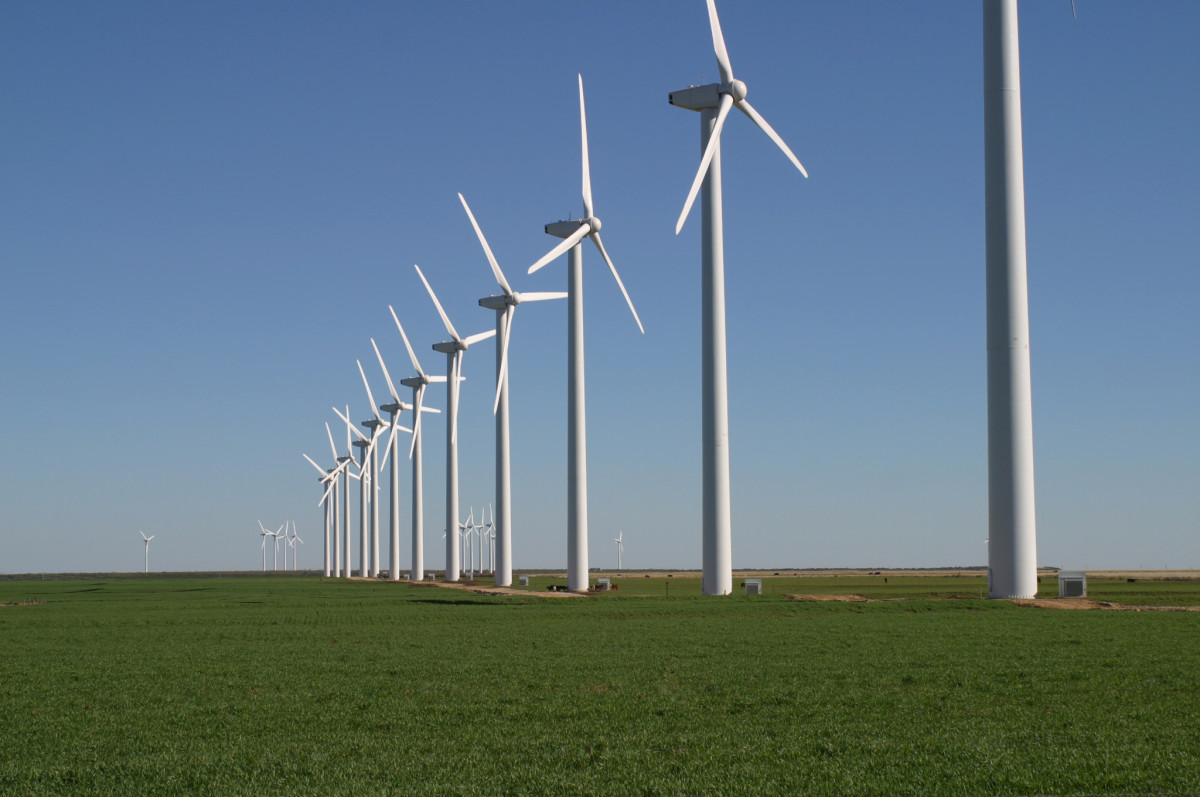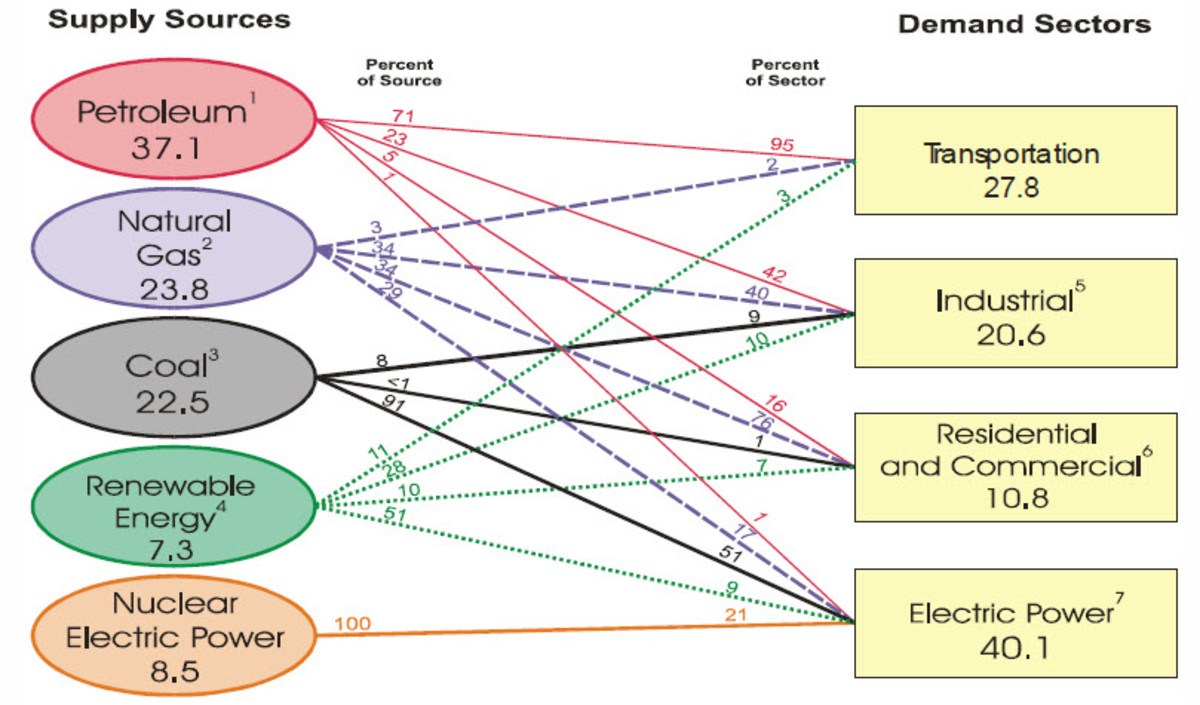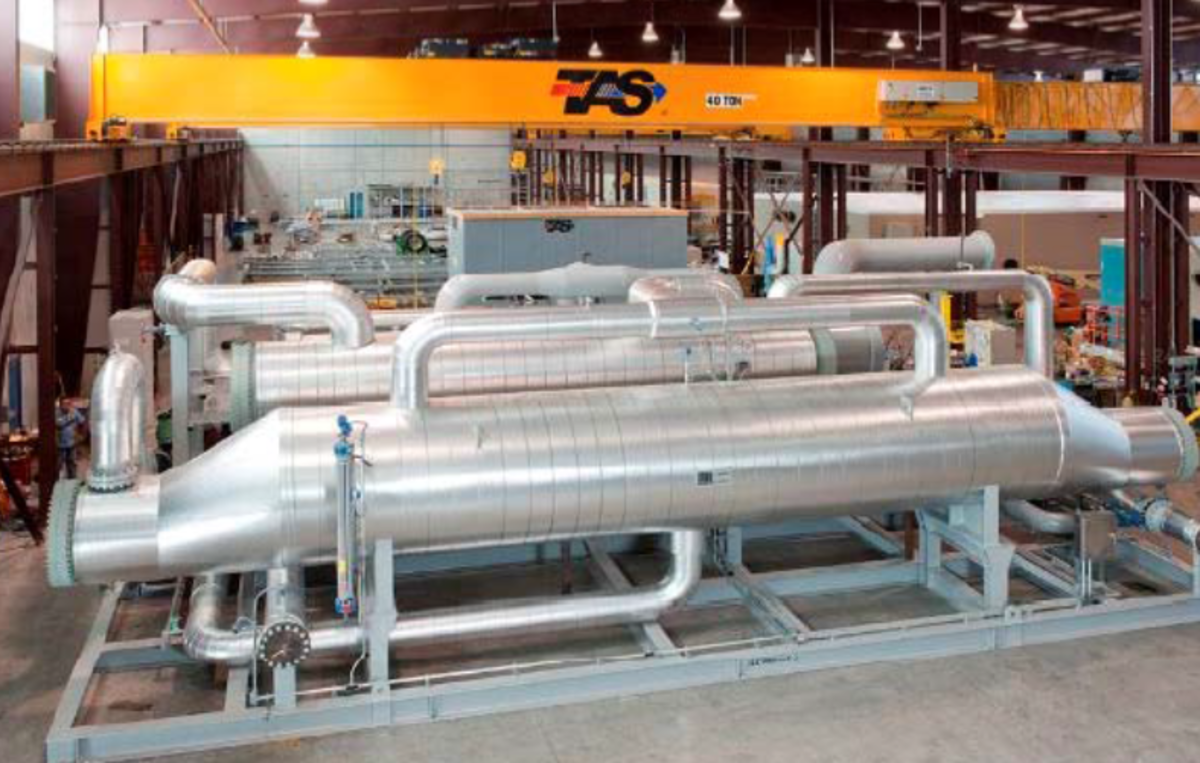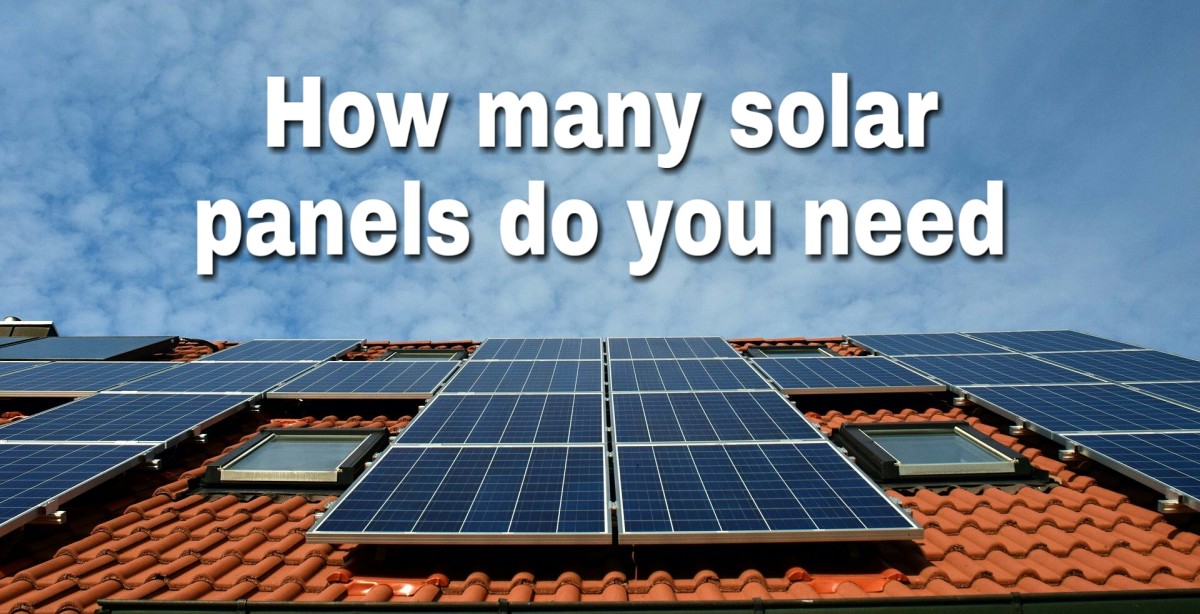Turbines that Break Wind
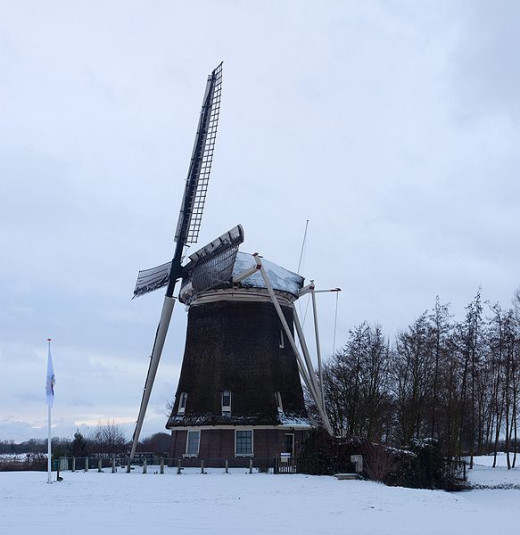
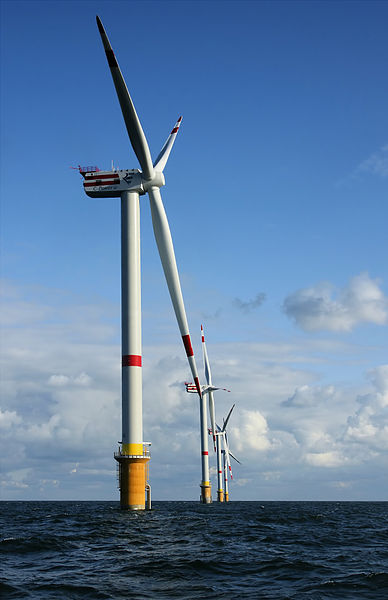
Overview
Hundreds of years ago, picturesque windmills in the European countryside could operate intermittently on moderately windy days, and still fulfill their primary functions: grinding cereal grains and pumping water. But in the 21st Century, wind power is a different ball of wax.
We live in an on-demand world. It's essential that we get electricity from the grid when we need it. Without it, manufacturing processes would shut down at the worst possible times, resulting in toxic leaks, fires, and other lovely horrors. Fortunately, some hospitals do have backup diesel-powered generators.
Renewable and reliable hydroelectric and geothermal power is abundant in a few places, like Iceland. (It helps that Iceland's population is relatively small.) But for most areas, if all of our electric power came from the two most-discussed renewable sources, solar and wind, the 21st Century economic system, to which we in the developed countries have become so accustomed, would not be possible.
Why not? Because solar power---and especially wind power--are intermittent in most places. I'll have more to say about that in a later section.
If the big changeover happened tomorrow, electric power from our grids would become dangerously unreliable. Small business owners and large corporations would be screaming their heads off.
Then there would be a run on the market for portable generators that run on expensive diesel fuel or gasoline. Los Angeles smog would become noticeably worse within a few days. Eventually we'd have a Politically Correct, North Korean standard of living.
Can wind turbines contribute in a significant way to a sustainable energy future in which we live off our energy income from the sun? The short answer is no.
The other publicly stated rationale for renewable energy, especially wind and solar, is to fight Anthropogenic Global Warming (AGW). In an earlier hub, we saw that AGW is the biggest scientific fraud since Lysenkoism in the old Soviet Union.
We'll explore a number of interconnected issues surrounding wind power: bird and bat fatalities, base load, peak load, grid instability, energy storage, economics, Rare Earth metals, and the impacts of wind turbines on National Parks.
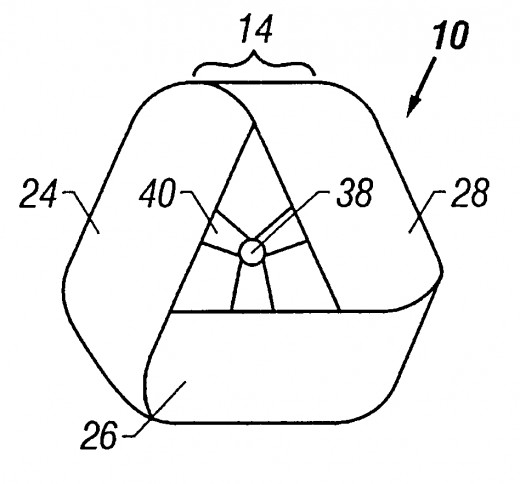
The birds and the bats
Conventional wind turbines mutilate birds and bats, who see lots of empty space between the blades, mistake them for tree branches, and attempt to fly through the empty spaces. A few of the bird fatalities are of rare or endangered species, but most are not. Most of the bats and some of the birds are of the agriculturally friendly, insect-eating persuasion.
Fortunately, there's a partial technological fix for this problem: the Mamikon Spinner. With the Spinner, an approaching bird would see a donut-shaped wall, with a small hole.
He should be less tempted to fly through that smaller space. The picture at right is a diagram of the Mamikon Spinner. The bad news is that the Spinner is not yet available on commercial wind turbines. More engineering studies are needed first.
Base Load and Peak Load
At the moment, coal is a cheap fuel for generating our Base Load electricity requirements. Nuclear is not quite as cheap. Incidentally, the USA is the Saudi Arabia of coal. And relative to population, Australia also has impressive reserves. But Peak Load is different.
At certain times of day, and during certain seasons of the year, electrical demand is higher than at other times. Here in California's Central Valley, it typically gets up to 95°F (35°C) on Summer afternoons. That's when air conditioning use is greatest.
Problem: Our 'workhorse' coal fired power plants are not particularly dispatchable. Ditto for nuclear plants. In other words, it's not possible for these two types of power plants to ramp up electric power generation quickly enough to satisfy the sudden increases in demand. This is where Peak Load comes into play.
In contrast with coal and nuclear, natural gas-fired turbines are quite dispatchable. The catch is that even with the relatively new fracking technology, natural gas is still iffy. Until all of the environmental questions about fracking are answered, it would not be prudent to scrap our coal-fired plants, and switch over to natural gas for Base Load.
Neither fish nor fowl
Depending on the quantity of hydro-power that's available in your area, this renewable energy source can contribute to Base Load, or to Peak Load, or to both. But in terms of the role that it plays in the generation of electricity, hydro is the exact opposite of wind power.
Wind turbines don't do squat for Peak Loads, because they're not dispatchable. Moreover wind turbines are too erratic to contribute to Base Loads.
Except in areas with abundant hydro power, wind turbines increase the need for natural gas turbines, which are dispatchable. When you inject ultra-expensive wind power into the mix, you burn more natural gas, but less coal. The upshot: Introducing even a small amount of wind-generated electricity into the grid can drive up 'leccy' bills dramatically.
The citizens of some European countries are nervous about their dependence on Russian natural gas. For these countries, increased wind power will continue to decrease energy security until fracking technology comes of age on their quaint little continent.

What about energy storage?
Wind power could be more reliable if it was coupled with some form of energy storage. Example: pumping water uphill into a reservoir. The water in the reservoir could then be used to generate hydro-power, as needed.
There need not be any direct connection between the wind turbine and the grid. Then large numbers of wind turbines would not destabilize the grid. However this is not a free lunch.
First, pumping water uphill is not 100% energy-efficient. Because of friction, a good part of the wind power would be dissipated in the process. Moreover some of the water that was pumped uphill would evaporate while it was in the reservoir. However there's a partial technological fix for that.
Hexadecanol is a non-volatile chemical that could be added to form a monolayer on top of the water. That would decrease evaporative losses.
More to the point, any of the proposed energy storage schemes would add to the cost of wind power, which is already exorbitant.
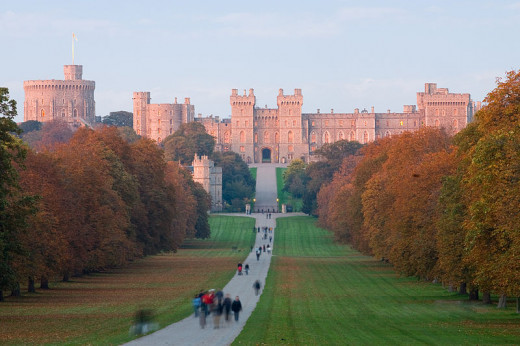
More perverse economics
The British have already reached the point of diminishing returns with wind power. Yet plans are in the works to build even more wind turbines in the UK. Here are a couple of links to articles in the British press about the economics of wind power in the Land of Orwell.
Too many windfarms destabilize the power grid.
The British government is actually paying wind farm operators to turn off their turbines during 'favorable' nationwide wind conditions, because the beasts increase the likelihood of brownouts and rolling blackouts at those times. I wish I'd thought of that. Those British bureaucrats are so clever!
Who needs wind at a British wind farm? Half of all British wind farms are not well-sited, and generate electricity less than 25% of the time. As of 2010, the worst offender was the Northumberland wind farm, which operated only 5% of the time.
Well-sited wind farms are supposed to have an EROEI of greater than 1. (EROEI is energy returned over energy invested.) But the Northumberland wind farm is slowly deteriorating, even during the 95% of the time that it's idle. I'd love to see the EROEI calculations for that wind farm. What is the big picture there? During the useful life of the turbines at Northumberland, will there be a reasonable payoff on the energy expended during their construction?
51% of the time, government policies are not about serving the taxpaying public. First there's corporate welfare. For example, wind power is big business, and like all 'enterprises' feeding exclusively at the public trough, it has taken on a life of it's own. You didn't think that wind turbines were lovingly hand-crafted by eco-hippy volunteers in their garages, did you?
Governments also pander to various single-issue constituencies. How reasonable is it to expect the politics of energy/environment to be any different?
Here's Wet Blanket Larry's helpful suggestion for the British government: How about a noisy, bird-killing wind turbine at Windsor Castle, as an eco-tourist attraction? The Royal Family could be setting a sterling example for everyone else. Or should I say a Neodymium example?
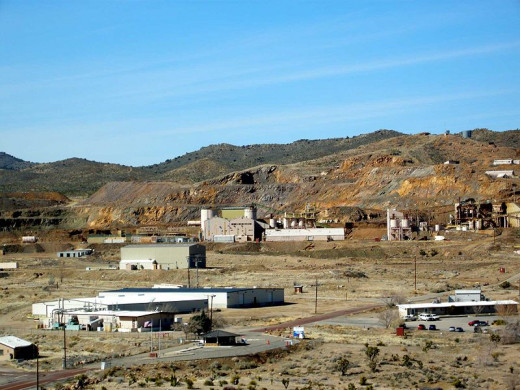
Wind turbines, Rare Earths and China
The electric generator in a wind turbine uses a magnet that's made from a Neodymium alloy. We could substitute a cheaper magnetic material, like Alnico, for the Neodymium magnets in wind turbines. But efficiency would take a hit.
Neodymium and other Rare Earth Elements (REEs) are the current stars of an economic drama that's unfolding on the world stage.
REEs are used in high-tech consumer electronics, electric cars, and of course wind turbines.
As of 2012, China is the leading producer of REEs. Recently China has been restricting exports of REEs, in an attempt to drive up prices of REEs. In addition, they're using vertical integration to make some of their manufactured goods more competitive. Moreover the Chinese leadership enjoys flexing its geopolitical muscle. As a result, other countries have been increasing production of REEs. The USA is in the process of reopening its REE mine at Mountain Pass, in the high desert of SE California.
Suppose our response is too little, too late. Then Neodymium prices would go through the roof. And wind turbines would become tempting targets for metal thieves. Wind farm operators would need to hire more security guards. This would drive up the cost of wind power even more.
Assuming that we're able to get past the REE crunch, we should give serious consideration to revoking China's "most favored nation" trade status. REEs are not the only serious problem that we have with China. Some additional issues: the Chinese disregard for patents and other intellectual property rights, saber-rattling in the South China Sea, the salami-slicing of Bhutan, and the ongoing human rights violations in Tibet.
More about wind turbines and the environment
As of 2010, the Danish government, in its infinite wisdom, was planning to clear-cut 15 km2 of the forested part of the Thy National Park, in order to put up a wind farm. Read all about it here.
Wet Blanket Larry has an obvious question to ask the Danish government: What about scrapping the wind farm plan, and using the same land as a woodlot instead? Plant fast-growing trees, and practice intensive Silviculture, including Timber Stand Improvement (thinning). Sweden is already planning to include its impressive forest resources as part of a long-term energy strategy.
Anyway, when you harvest the mature trees, would you get at least as much sustainable energy from burnable wood per hectare per year, as compared with the net energy gain from wind farms there?
Wind turbines do not decrease the requirements for conventional generating capacity, which is needed when the wind ain't blowing. Moreover wind farms have huge footprints, relative to their electrical output. It's possible that the lands dedicated to wind farms could have secondary uses, but meaningful outdoor recreation is not one of them.
Environmentalists vs The Environment: It sounds like the title of a bad movie, but it's real, and it's coming to a natural area near you. Please pass the popcorn.
Copyright 2012 and 2013 by Larry Fields
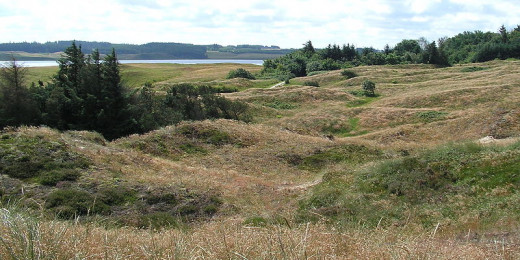
News stories
Danish Wind Turbine Company That Received Over $50 Million In Stimulus Lays Off 800 Workers
A Danish wind turbine company whose subsidiaries received over $50 million in U.S. stimulus dollars announced on Friday it has cut more than 800 jobs in the United States and Canada this year and may be forced to lay off another 800 employees in North America.
This is yet another green energy company that received wasteful stimulus funds and does not even have anything to show for it. Read more HERE.


